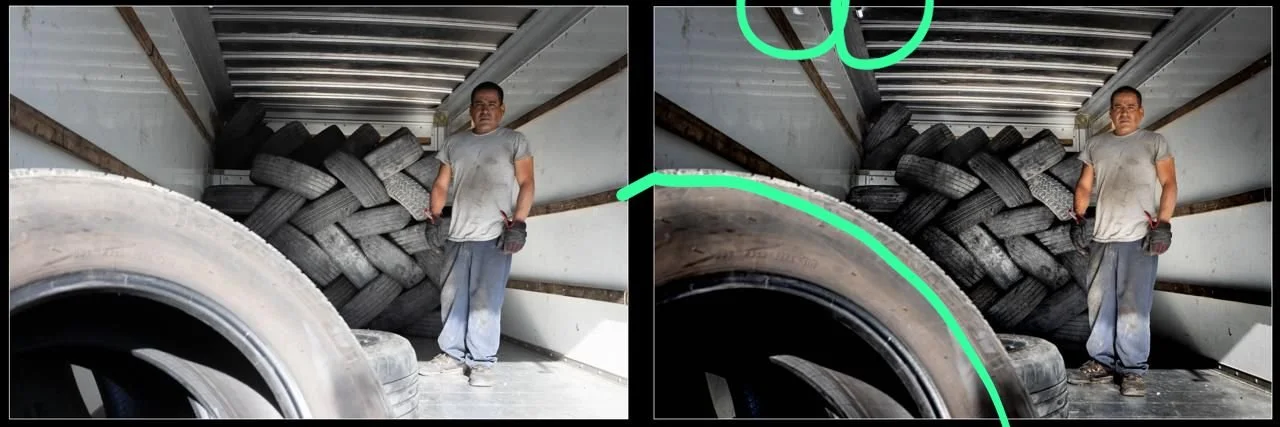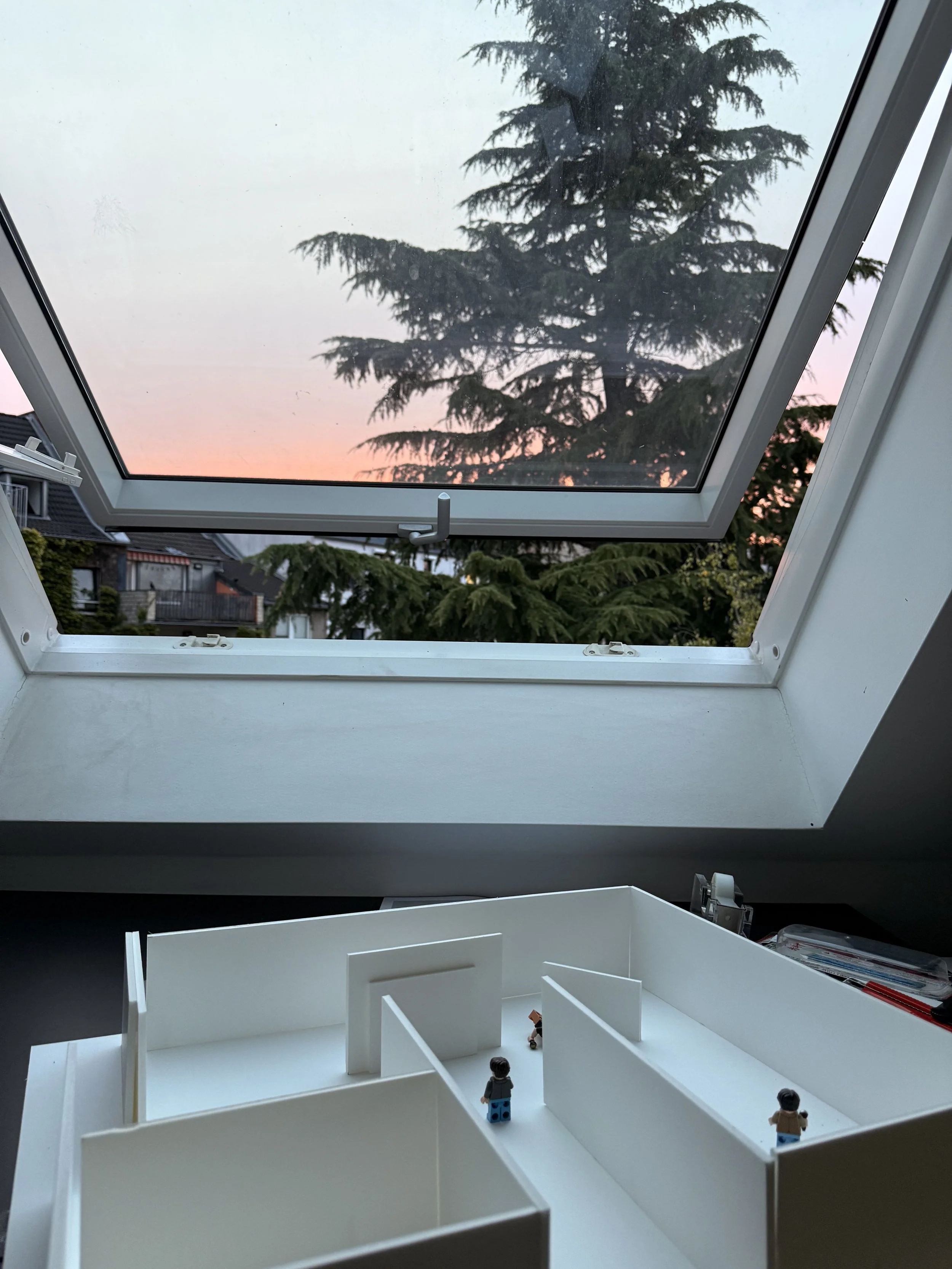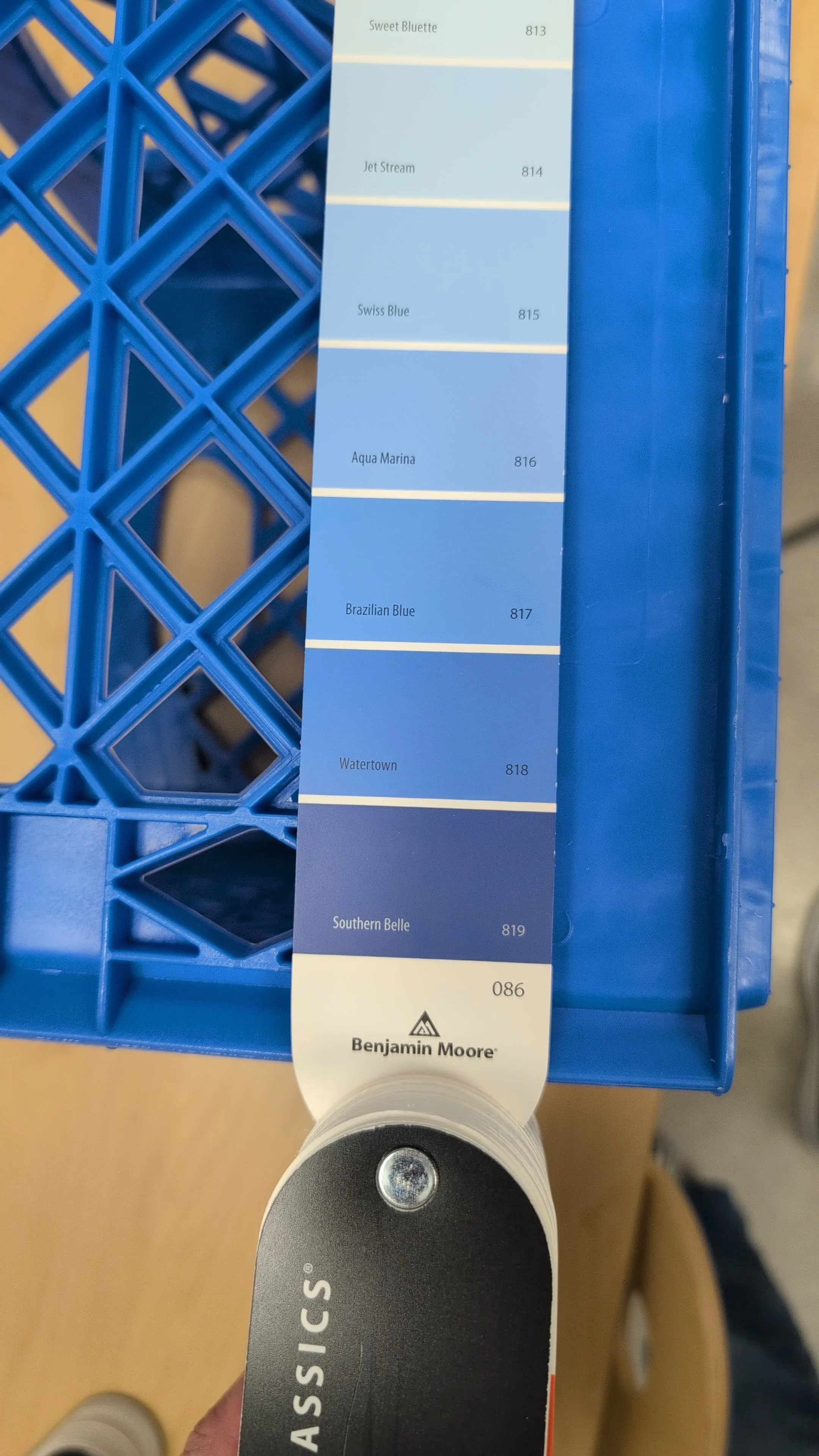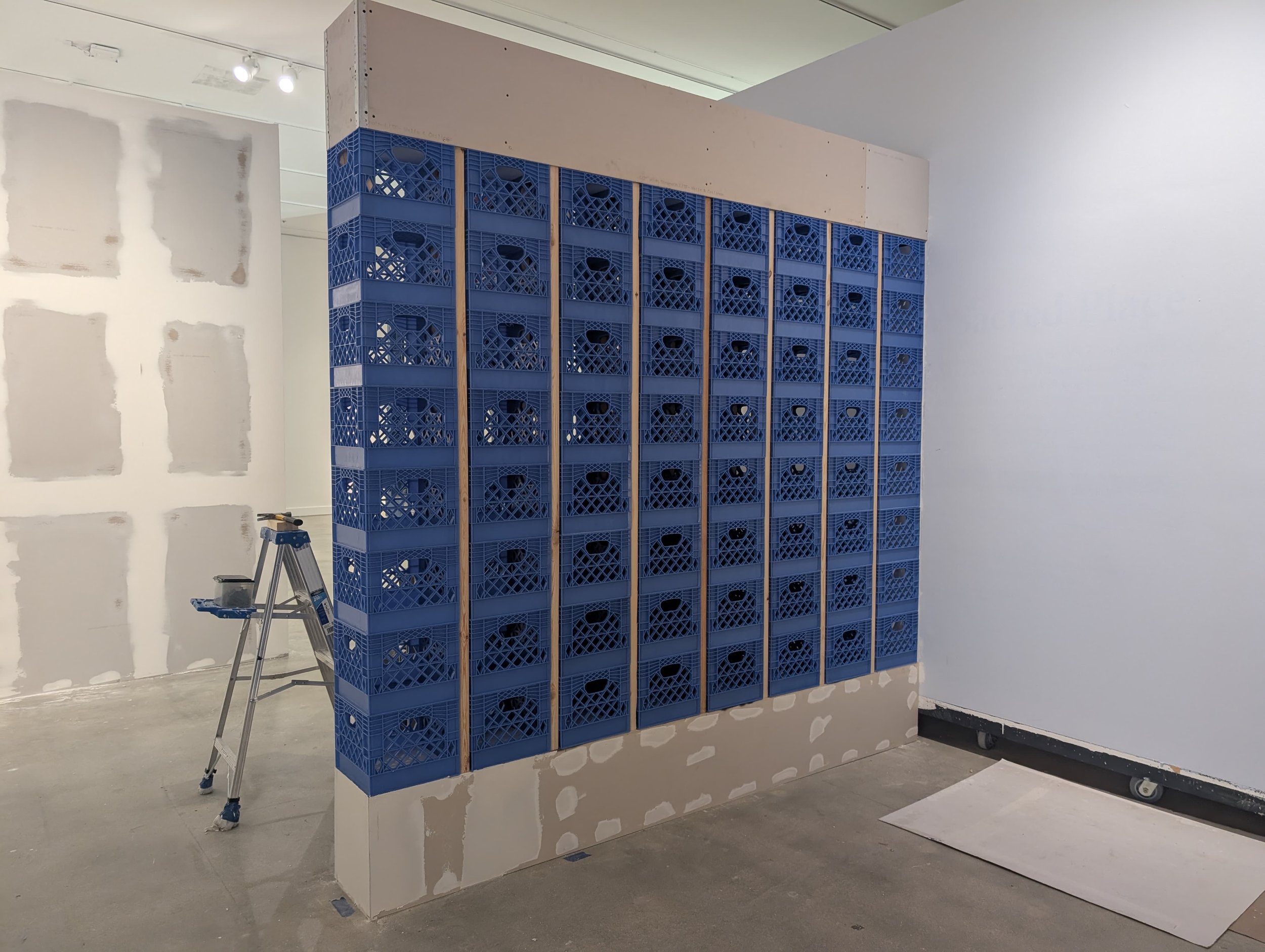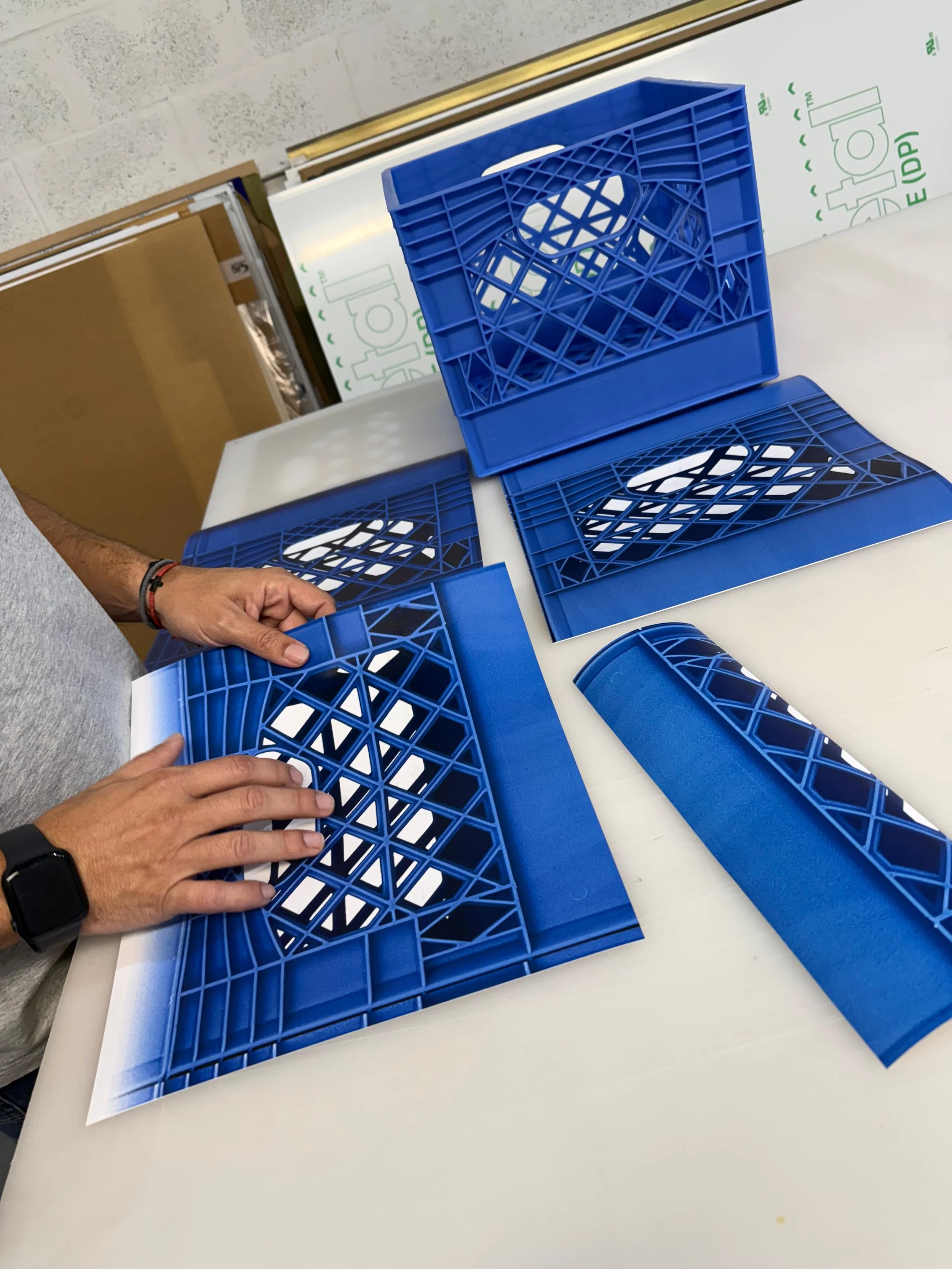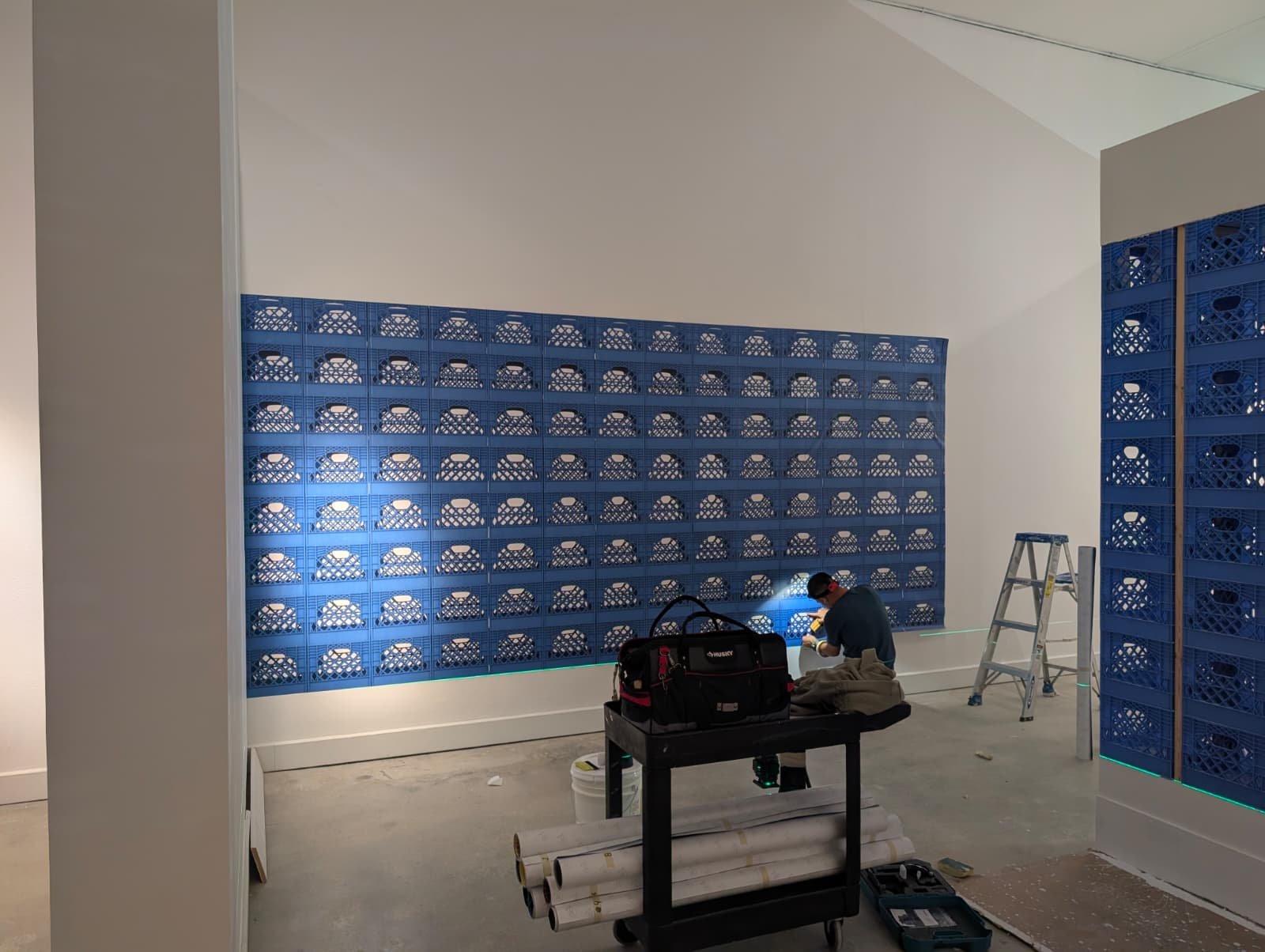Behind the Scenes of Curating “belonging in transit”
Belonging in Transit is Carlos’s (Cali) Muñoz first exhibition and we have been working for a full year along with him for it to happen. We got Carlos, his project´s entire raw files collection, a generous empty space at the HistoryMiami Museum and its wonderful team to work with.
Portrait of Carlos Muñoz in the empty HistoryMiami Museum gallery. Photograph by Roberto Mata, November 2025.
Poster, an alternate edit of Belonging in Transit, by Doublepage.
Next Wednesday marks an important milestone for our studio: the opening of our first exhibition curated and designed together. Although both of us have curated independently in the past, this project is the first one we’ve shaped side-by-side under our shared practice and it has been one of the most rewarding collaborations we’ve experienced.
Working with Carlos, whose photographic work is rich, layered, and emotionally open, and with the team at the museum, has reminded us why we do what we do. Curation isn’t simply about choosing images. It’s about building a conversation with the artist, the institution, and ultimately with the public.
Belonging in Transit unfolds in the migrant market of Redland on the outskirts of Miami, reminded us just how expansive photography can be when it speaks from within an experience rather than about it. His work resists distance: the camera does not stand apart or document from the outside; it recognizes, it mirrors, it carries memory. Each photograph navigates the quiet textures of displacement, gestures of labor, improvised architectures, the grain of skin, the emotional negotiations that shape diasporic life. These are not portraits of “others,” but reflections of the photographer’s own condition as a migrant, making the series as intimate as it is communal. Entering this world with him, and understanding the emotional terrain behind each frame, became foundational to the curatorial process.
Mentorship: A Four-Month Dialogue
Before becoming an exhibition, this project was a workshop exercise, a seed planted at our school during a class taught by Paúl Aragón Leytón. From there it grew into something larger, receiving the 2023 HistoryMiami Museum Photography Fellowship, which gave Carlos the time and resources to deepen his engagement with Redland. You can read more about the origin of the project here.
Following the fellowship, we at doublepage entered the process as mentors, accompanying Carlos through a four-month development period. Each week, after his visits to the market, we met to review new photographs, discuss encounters, and help him identify emerging patterns in the work. We brought references and photographic lineages for him to study, proposed angles and questions to push the project forward, and created a structure in which the work could grow deliberately without losing its emotional pulse.
Our role was not to steer him toward our ideas. It was to support his own, his perspective, his sensibility, and the deeply personal way he related to the stories unfolding at Redland. The project evolved through his consistent presence in the community; our task was to hold space, offer clarity, and help him trust the narrative he was already building.
From 5,040 Photographs to 49: The Art of Reduction
The art of discarding until defining the essential for the narrative. Lightroom catalogue. January 31st, 2025
Every exhibition begins with a vast landscape of possibilities. In this case, it was 5,040 images representing 3 years of Carlos’s work. Our role was to dig through this archive and listen for the threads that wanted to emerge.
The early stages were intuitive and exploratory: long sessions between Cologne and Miami viewing sequences, grouping images, rearranging them, then undoing everything and starting again. We weren’t looking for “the best” images, we were looking for the ones that spoke to each other. Slowly, patterns appeared: recurring gestures, atmospheres, tensions, and quiet moments that revealed a deeper narrative.
Once we identified those currents, the more rigorous work began. We discussed each selection with Carlos, not to validate choices but to understand intention. What was happening outside the frame? What emotional terrain was the image working through? These conversations shaped the conceptual spine of the exhibition and the curatorial text.
In the end, we arrived at 49 photographs: a distilled narrative that feels true to Carlos’s vision while also becoming something new, something created collectively.
49 photographed that we then developed and retouched with intention, everything adds to the narrative. Everything needed to be perfectly aligned.
Designing the Experience: How Space Shapes Interpretation
The design team, recreated the space and played with lego figures to define the layout. Yes, we also used a 3d model, but this was way funnier.
Curation and exhibition design are inseparable to us, we believe in the power of 360º projects . Once we had the final selection, we began thinking about how visitors would encounter the work. Our goal wasn’t simply to display photographs on walls, but to choreograph an experience.
We considered:
Layout: How do the images unfold as you move through the space? Where does the narrative expand, and where does it tighten? We experimented with rhythm, clusters of intimacy followed by moments of openness.
Scale and placement: Some photographs demanded to be monumental; others worked precisely because of their smaller, more intimate size. Choosing dimensions for each image helped us guide the viewer’s gaze and emotional pacing.
Black & White vs. Color: Emotional Focus vs. Environmental Presence
We selected black-and-white images strategically to heighten emotional clarity, removing the noise of color so gestures, expressions, and the quiet tension of the moment could surface with greater intensity. Color photographs, on the other hand, root the viewer in the atmosphere of Redland itself: its textures, light, heat, and constant movement. Together, these choices guide the viewer between internal experience and external environment, mirroring the emotional duality of the work.Crates as a Universal Market Symbol
Instead of recreating market stalls or using literal produce, we chose plastic crates as the visual and architectural anchor of the exhibition. They are functional, ubiquitous, and instantly recognizable across cultures, a subtle way of bringing the market into the museum without imitation. Their presence adds warmth, texture, and a sense of labor and movement. They also resonate with Carlos’s words: “It’s not about them; it’s about us.” Because displacement, reinvention, and the search for belonging are conditions shared far beyond Redland.Color and Wallpaper as Spatial Rhythm
The exhibition is divided into four chapters, each marked by a color drawn from the vivid palette of the crates. These shades evoke the energy of the market but were chosen carefully so they would not compete with the photographs. Instead, they create rhythm and orientation: signaling transitions, expanding emotional tone, and structuring the visitor’s journey. Color becomes a tool to empower the images, not overshadow them.Typography and graphics
Everything needed to add to the photos, the space and Carlos’s intention, graphic elements are key to define the viewers journey. We also created a piece that people can take home with an alternate edition of the work. Photos that are not on the walls but that placed together on this poster offer a second reading of the exhibition.
Beauty in the making. HistoryMiami Museum. November 12, 2025. Seven days before opening night.
Our collaboration with the museum team was essential here, from wall construction, replicating a table from the market, graphic design support and much more, always ensuring the design supported both exhibition standards and artistic intention. But above all, what made this collaboration so meaningful was their openness: every idea we proposed was met with curiosity, generosity, and a sincere willingness to make it possible. Their commitment shaped the show as much as our own vision did.
A Collective Achievement
As the opening approaches, what we feel most strongly is gratitude: for the trust Carlos placed in us, for the museum’s openness, and for the chance to bring our two curatorial voices together in one shared project.
This exhibition reflects not only an artist’s vision but also the process behind it, the conversations, the careful decisions, and the belief that photography can tell stories in ways words sometimes cannot.
We can’t wait to share this journey, and these images, with you next Wednesday.







